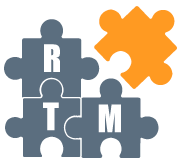
Project requirement tracking and verification (PRTV) are crucial in project management, as they work hand-in-hand to ensure that a project delivers what it's supposed to and meets specified standards.
PRTV is crucial as it reduces rework and costs, ensures quality, facilitates compliance, mitigates risks (due to no missed-out requirements), and builds stakeholders’ confidence.
The requirement tracking monitors its status and manages its workflow throughout the entire project lifecycle.
The requirement verification is a three-step process. First, the requirement is prioritized and checked for feasibility, completeness, correctness, and consistency (and is mapped to a concrete deliverable) before the project initiation. The next step is documenting the requirement having passed the tests and inspections. The final step is obtaining formal approvals and sign-offs from relevant stakeholders that a requirement has been met.
Conventional project management reduces PRTV to maintaining the Requirement Traceability Matrix (RTM) - a stand-alone Excel table that links initial requirements to verification methods and resources. The RTM manual compilation (from the project tender documents) and successive updates (via communication with stakeholders) are time-consuming, error-prone, not transparent, not traceable, and do not scale up well.
A starting point for automation of PRTV management is the automatic identification and extraction of requirements from the tender documents and comparing them to the company's default standards and practices.
This task cannot be implemented without standardization of the tender documents (regarding structure, terms, and language) and digitizing its content (a.k.a. making it paperless).
Envisioned by crenger.com a digital tendering application (TA) combines components from two existing web applications – online FEED request submission and online OEM quotation submission. TA covers process input, scheme and definition, engineering standards, power supply, design preferences and uncertainties, scope, and operation commercial conditions.
The mentioned TA components convert a tender into a stream of numerical and textual data easy to analyze. The data is sorted automatically by the project phases – design, engineering, procurement, commissioning, and maintenance.
The design data is directly used for the plant design and, therefore, is excluded from PRTV. For instance, the power supply data or standards for motor mechanical and electrical designs are directly broadcast onto all motors of the plant.
The serious challenge is possible requirement ambiguity and inconsistency. Most of the requirements are textual. They may be loosely defined or be without clearly set scope boundaries. The following tender clause illustrates the problem.
"The plant shall be designed for fail-safe emergency shut-downs. Uninterrupted power supply source (UPS) shall be included in scope."
Without defining fail-safe shutdown UPS scope may formally limited to its bare minimum - powering the PLC cabinets and normally closed valves.
Subtle differences in wording may have substantial cost implications. For instance, the “API-compatible lube system” is 30% less expensive than the “API lube system”.
The possible requirement ambiguity shall be resolved before the RFQ/tender issue. One of the easiest solutions is to offer the client the default set of valid requirements (with explanation) for editing and copying. This is an approach selected by crenger.com.
The web interface of the clause editor (shown below) represents a clause as a text, table, or image with metadata that allows quick clause categorization and search.

